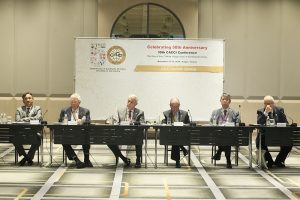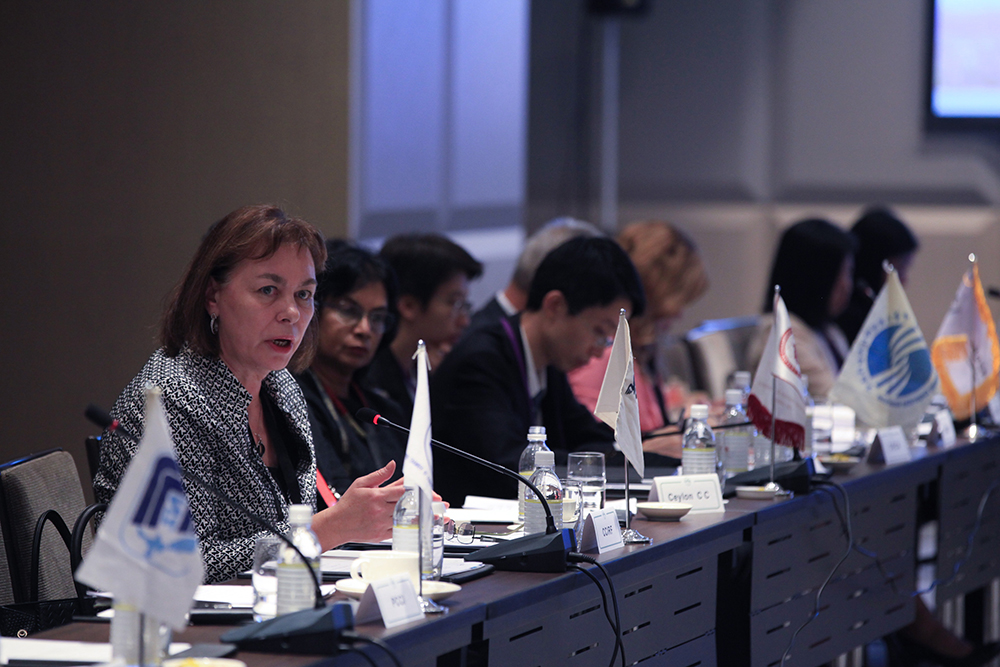2016 Taipei – The Future Agenda of CACCI
1. We, representatives of members of the Confederation of Asia-Pacific Chambers of Commerce and Industry (CACCI) met in Taipei, Taiwan on November 24, 2016, to exchange views on the new roles, directions, and activities that the Confederation should undertake to ensure that CACCI, as a regional organization, continues to be relevant to its members and promote the interest of the region’s business sector, taking into account the recent changes and developments in the global and regional markets.
2. CACCI recognizes that over the past five decades, a new economic reality has emerged in Asia. Many of the region’s economies grew significantly over the period, enabling Asia to emerge as a dominant force in the global economy. Many countries in the continent pulled off economic “miracles”, and several became economic powerhouses. Asia as a whole has made unprecedented strides in reducing poverty and improving broad development indicators.

3. As a result, the region has grown bigger and richer. The region today accounts for about 40 percent of the world’s GDP – up from 25 percent in 1990 – and contributes about two-thirds of global economic growth. With a population of some 2.8 billion people (nearly half of the world’s total), a GDP of some US$14 trillion, an average per capita GDP of US$5,200, and a total trade amounting to roughly US$8 trillion, Asian countries constitute a substantial market. These figures only serve to underscore the importance of the Asian region as a major player and contributor in the global economy. Indeed much of the progress made in the world market in recent years has been achieve due to invaluable contributions from the region.
4. Many analysts believe that the centre of gravity of the global economy is shifting towards Asia and that this trend is most likely to continue in the decades to come, with the region’s economies expected to continue to grow at an average annual rate of 5 percent, leading global economic expansion. With a combined population exceeding those of other major economies, Asia is expected to be the driving force behind the world’s economic growth in the years ahead.
5. However, CACCI also recognizes that the region today is facing challenging economic conditions. With growth in advanced economies tepid, risk aversion increasing in global financial markets, and the commodity super-cycle coming to an end, the world economy is providing little impetus to Asian growth. At the same time, other major economies in the region are moving toward more sustainable growth models that imply slower expansion. With the growing links between these countries and other Asian economies, the spillover effects are expected to be significant.
6. Given this new context, CACCI is convinced that partnership and cooperation – both within and across national boundaries – should be one of the principal concerns of countries and of the business communities in the Asia-Pacific region. CACCI believes that today, more than ever, regional cooperation and integration plays a critical role in accelerating economic growth, reducing poverty and economic disparity, raising productivity and employment, and strengthening institutions. CACCI supports the APEC Leaders’ commitment – expressed during their recent Peru meeting – to build a dynamic, harmonious and open economy in the Asia-Pacific region featuring innovative development, interconnected growth and shared interests by re-affirming free and open trade and investment, accelerating regional economic integration, promoting competitive markets, encouraging economic and technical cooperation, and facilitating a favorable and sustainable business environment.
7. However, CACCI also maintains that growth needs to be both economically inclusive, lifting millions of people in Asia out of poverty, and be environmentally sustainable. We endorse the APEC Leaders’ declaration to strengthen efforts to ensure decent work and work life quality for all, especially socially vulnerable groups, by providing access to quality inclusive education and vocational training, boosting entrepreneurship, improving social protection, and enhancing regional cooperation. There is much to do in ensuring the survival of SMEs, keeping regional and global trade open, continuing reforms to promote ease of doing business, investing in human capital and technology to meet the changing skills requirements of the markets, ensuring inclusive economic growth, and moving forward with clean energy and clean technologies to confront the challenge of climate change, among others.
8. CACCI strongly believes that businessmen in the region need to rely more on each other to be able to sustain their growth and development. The challenging and rapidly changing environment that the region find themselves today call for an even greater role of the private sector in ensuring that the economic stability and sustained growth which the region has always been widely known for, will be maintained and will continue through many years to come.
9. As it has learned from the various Asian financial crises over the past two decades, CACCI believes that cooperation is essential in times of adversity, as well as in times of prosperity. CACCI is confident that its membership and their respective constituencies have the right mix of expertise to see through the threats and challenges, to evaluate the potential business solutions, and – as the famous phrase goes – to “turn adversities into opportunities.”








